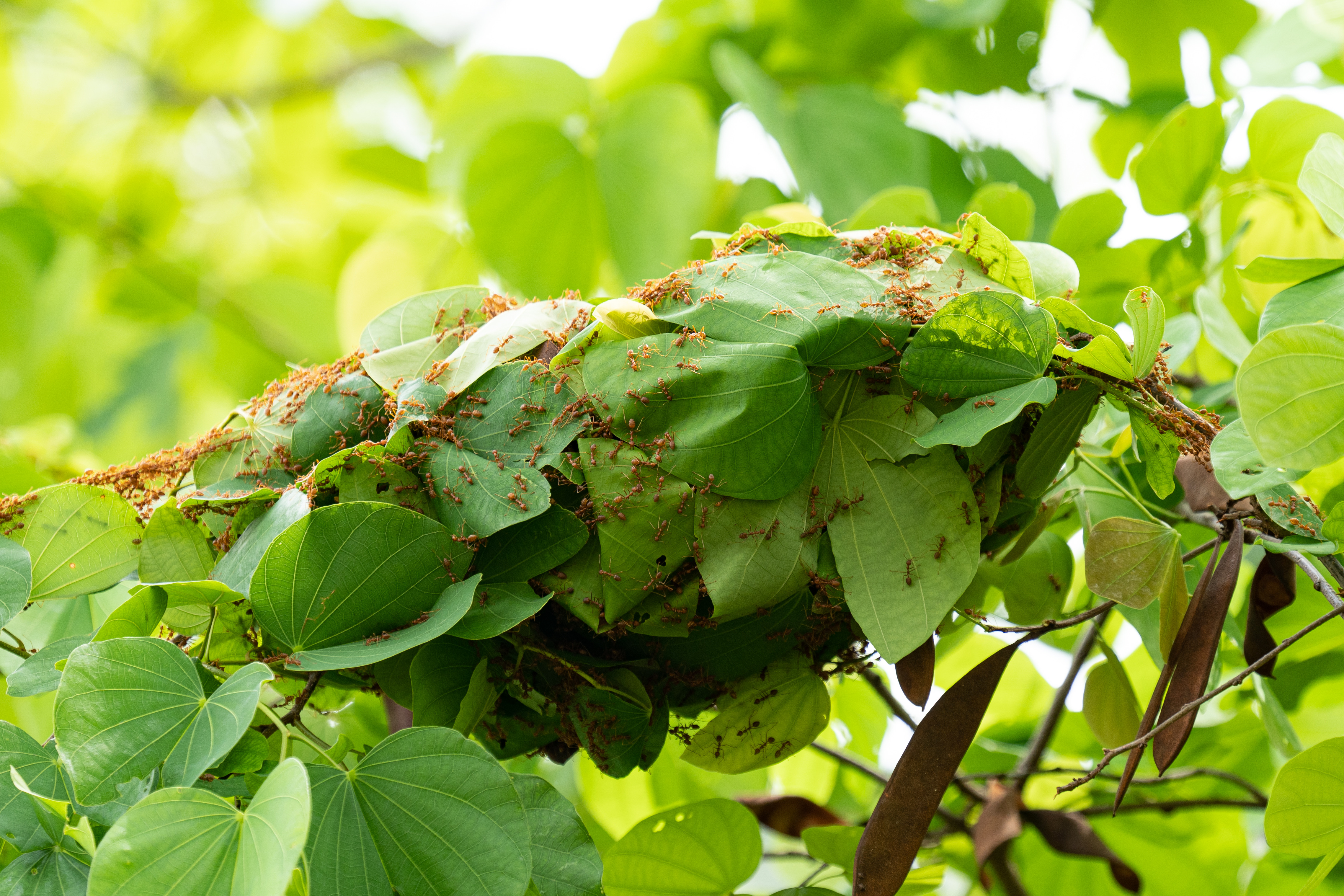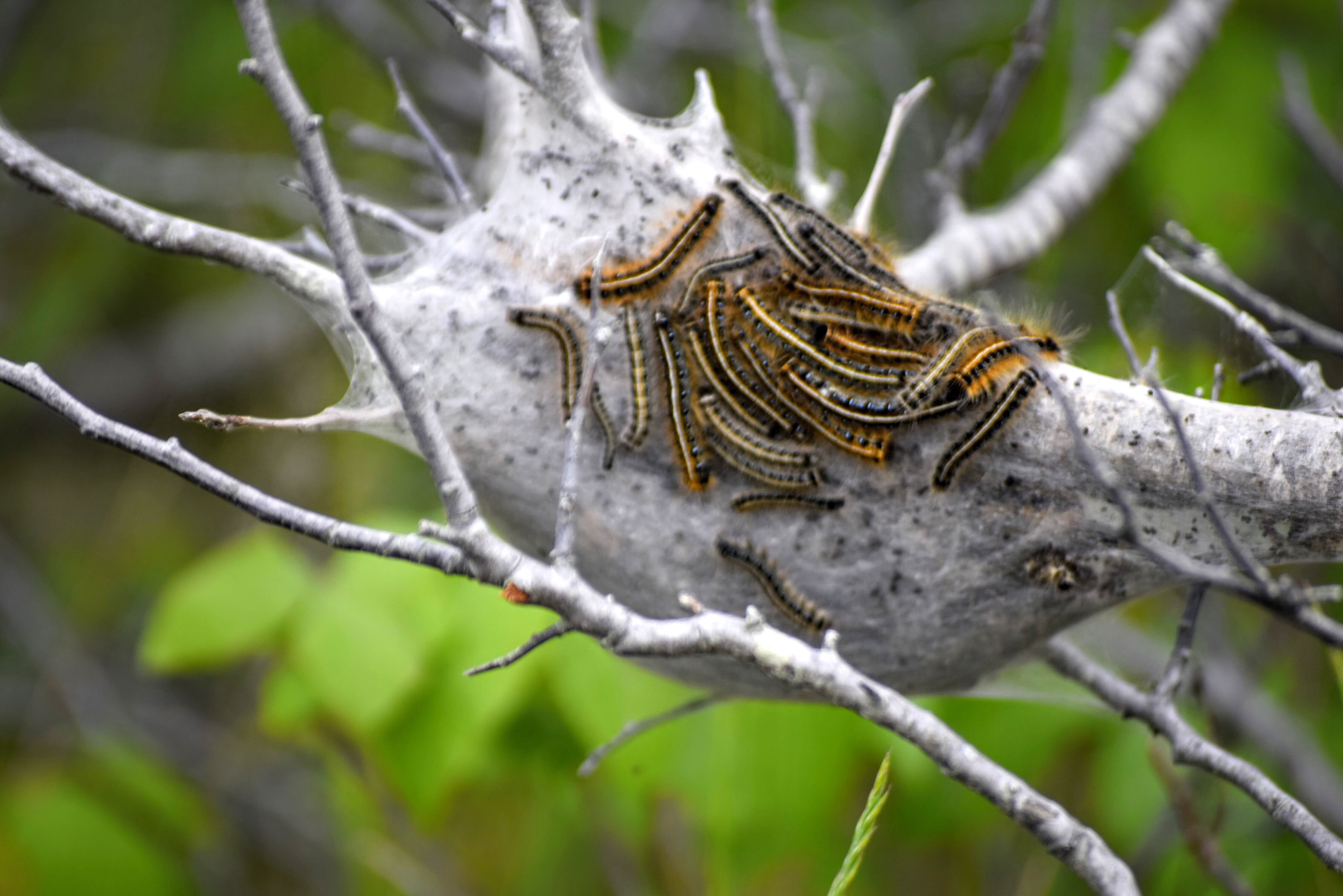Each year we spend countless hours putting effort into our landscapes to achieve a stunning look for our property. At times, it can even be challenging to keep up with the maintenance that comes along with the blood, sweat and tears we poured into developing it. However, ensuring that your landscape is healthy not only adds to your curb appeal of your property but also ensures long lasting, healthy plants. There are a variety of things to consider when maintaining your beds, including tree and shrub insect control.
Different seasons affect the life cycle of different insects, which is why we recommend 3 applications per year to control them. Because the preventative care spray only affects the bug itself and not the eggs, the timing of each application is critical. There is a small window of opportunity for spray control and spraying outside of that window could prove ineffective. Starting treatments when the young hatch in May to early June, or once you start seeing mosquitoes, is ideal for effective control. This allows us to break up their life cycle and prevent more eggs from being laid.
Because the preventative spray is a 21 day residual that will keep insects away in problem areas, each application should be applied one month apart in June, July and August. By doing this, the spray will prevent already hatched insects from sucking out the nutrients and will help keep the color in your trees and shrubs.
We’ve listed off 6 of the top insect problems and how they affect specific trees and shrubs here in Missouri.
Japanese beetles.
These insects flock to roses and ornamental trees feeding on the foliage and blooms. Heavily infested plants will appear scorched because the leaf tissue between the veins is removed making them look like brown lace. Be careful, even weeds attract these guys!
Spider mites.
Spider mites will cause damage to burning bushes. Initial damage to appear will be a peppering of dots on the leaves. If not treated, the leaves will turn yellow causing them to drop. Be wary, spider mites are very small and can be difficult to see!
Aphids.
These guys suck the life out of a variety of home garden and landscape plants. For example, they often infest ash trees, hydrangeas, maple, oak, walnut and pine trees and many others. Though it’s rare for them to kill a plant, these sap sucking insects will reduce vigor to the plant and cause stunted growth. Leaves will become curled, puckered and yellowed and can even create galls on stems and roots. The sweet, sticky honeydew they leave behind also attracts fungi that disfigures the vigor of the plants and welcomes unwanted ants and flies that can become a nuisance to your property.
Scales.
Scales will suck the life out many trees and shrubs such as azaleas, birches, magnolias and many others. The piercing, sucking mouthparts of this insect often results in yellowing of the leaf and leaf drop. If repeated enough this can ultimately cause death to the plant.
Bagworms.
Deciduous and evergreen shrubs and trees and junipers are their favorite. Larva feed on the foliage. If enough are present plants can be stripped of foliage in short amount of time.
Tent caterpillars.
Tent caterpillar will attack ornamental fruit trees. When they are abundant, complete defoliation of the tree will occur, weakening the trees. Good news, the tree affected is rarely killed or suffers permanent damage.
At Bluegrass, we offer comprehensive tree and shrub treatment programs where we address your insect and disease issues. As your tree and shrub care experts we can help you preserve your landscape assets! Give us a call at 314.770.2828 or use our simple contact us form to discuss your tree and shrub care needs.
References
Barret, B. A. (2008, June). Aphids, Scales and Mites On Home Garden and Landscape Plants. Retrieved from University of Missouri Extension: http://extension.missouri.edu/p/G7274
Insect and Mite Control. (n.d.). Retrieved from Tomlinson Bomberger: http://tomlinsonbomberger.com/tree-services/tree-and-shrub-program/insect-and-mite-control/
Kopp, G. (n.d.). Top 10 Insect Problems of Trees in the Lower Midwest. Retrieved from Missouri Botanical Garden: http://www.missouribotanicalgarden.org/gardens-gardening/your-garden/help-for-the-home-gardener/advice-tips-resources/visual-guides/insect-problems-of-trees.aspx
Tree Damaging Insects. (n.d.). Retrieved from Allen’s Tree Service: http://allenstreeservice.com/drupal1/Tree%20Damaging%20Insects




